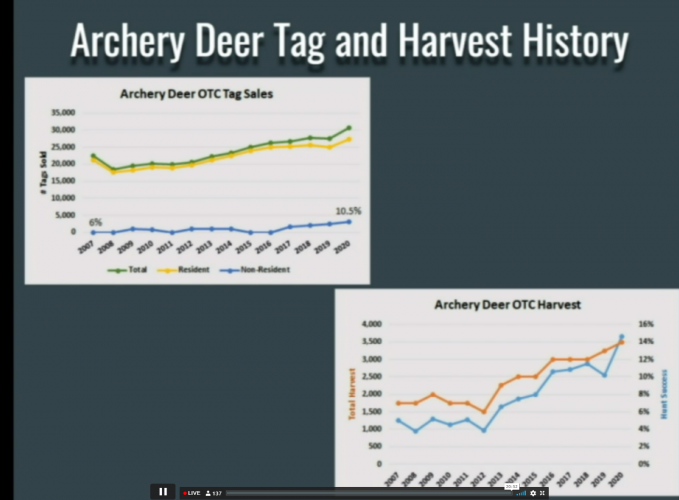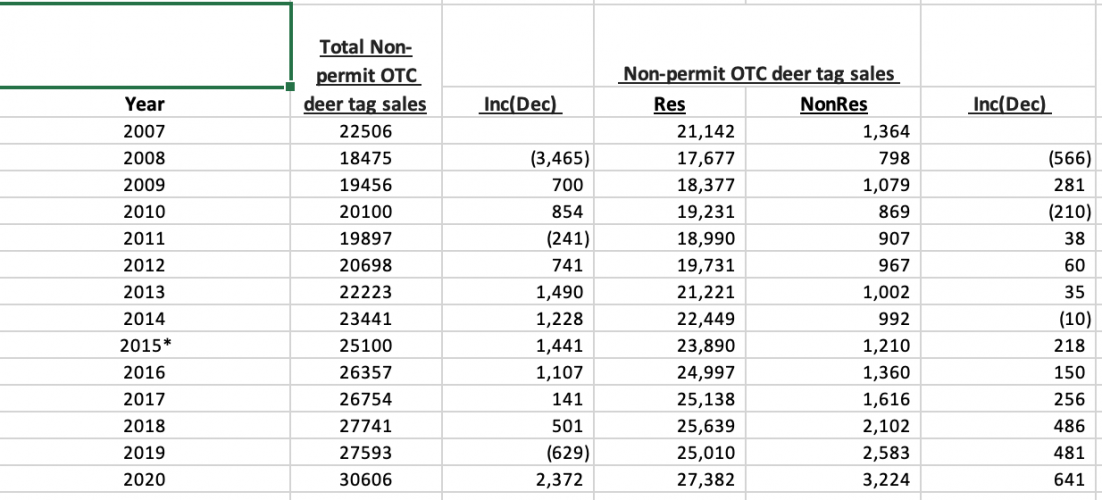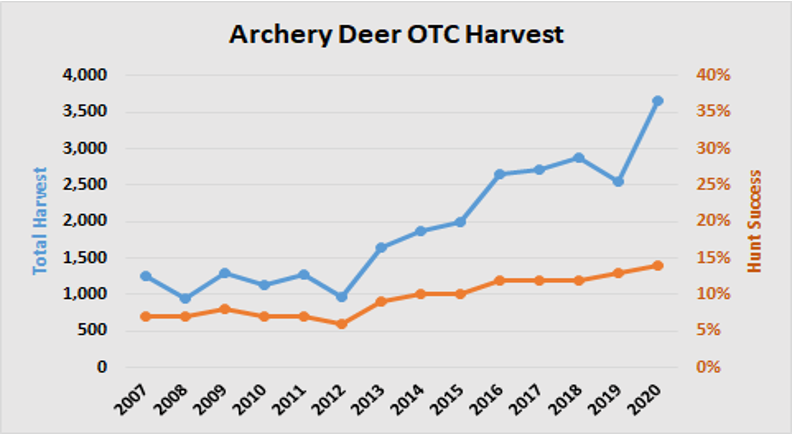FlatlanderAZ
Well-known member
Do I think hunts would have been changed without our contract? Yes, I think the changes would have happened regardless. Given the extended drought that is negatively impacting doe-fawn ratios and the huge increase in archery success rates starting around 2014, the Arizona policy guidelines related to deer management would have resulted in these same, or similar, outcomes. Two factors game managers have no control over; factors which result in metrics that trigger more restrictive deer management. When the targeted archery harvest is to be kept at/below 20% and archery success rates double in less than ten years, the added consequences of a long-term drought would have likely triggered changes to OTC archery deer hunting, heavily focused on mule deer that are far more influenced by drought and more susceptible to hunting pressure.
Thanks for weighing in on this it’s nice to find personalities who are willing to have a dialogue. I have some questions that I hope you would consider:
Do you feel that your promotions have contributed to the 40% increase in NR otc archery deer tag sales since 2018?
And do you acknowledge any impact by your promotions in the availability of otc opportunity in the state of AZ?
And what would you say to the AZ resident who is watching their opportunity to hunt diminish every year? Do you feel that your efforts have helped improve the long term sustainability of hunting in our state?
Last question, why didn’t you disclose this relationship in the content that you produced? The way this was presented I really didn’t suspect that department dollars were funding the hunting personality soirée in our desert every year.







